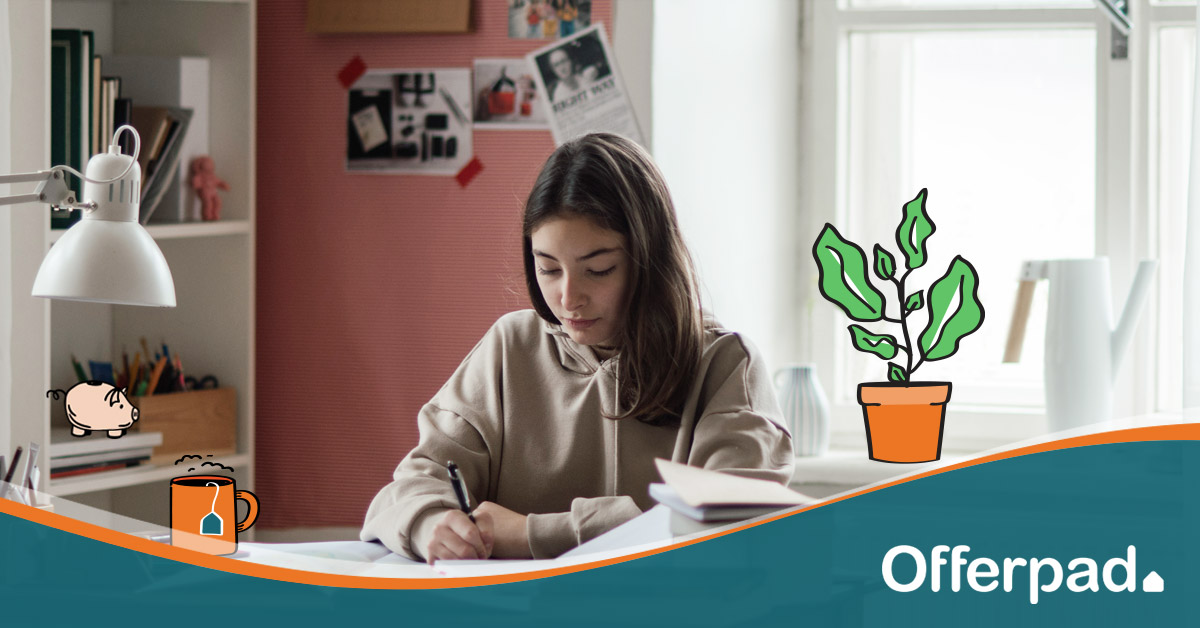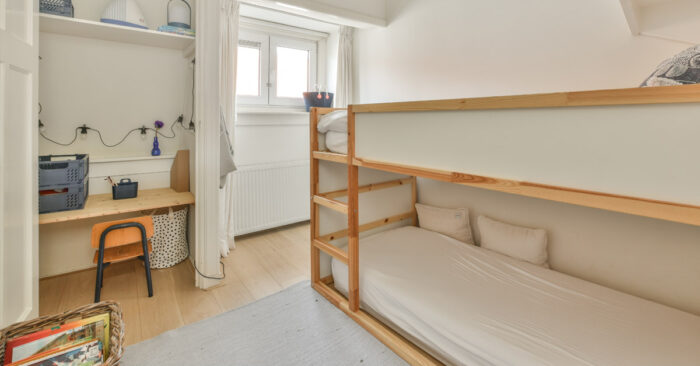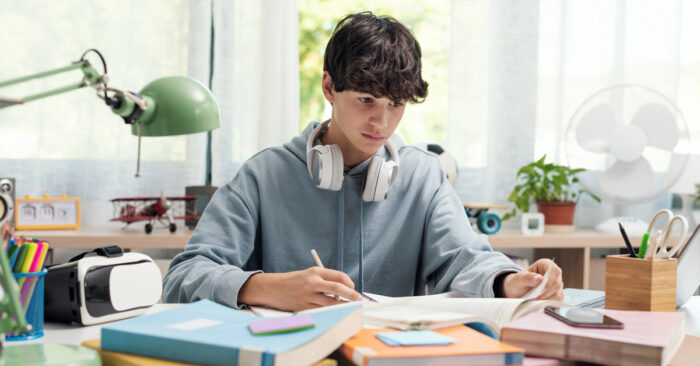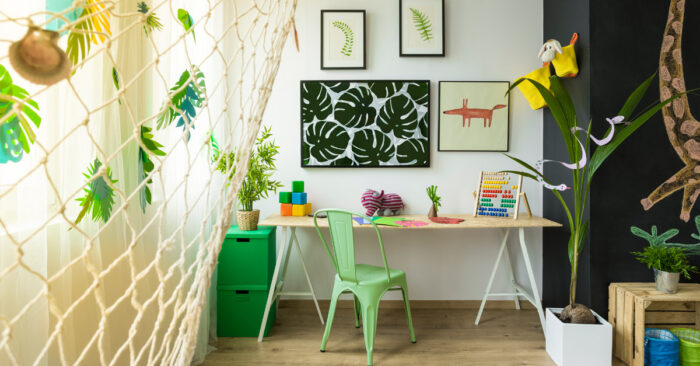
Pencils down, parents! Hard to believe, but homework season is already upon us.
Fall may still officially be weeks away, but many students across the country are already back in the classroom. And that means homework.
Did you know that one of the top 10 reasons kids don’t do their homework is lack of an appropriate space to do assignments at home?
Well, we’re here to help! Study these tips for inspo on how to create a dedicated study space that’ll move your little learners to the head of the class.
Start with the basics
You probably already have what you need to give your kids the space they need to study on hand:
- Desk
- Chair
- Desk lamp or overhead lighting
- WiFi/Internet
- Access to electrical outlet
- Storage for supplies
This stuff doesn’t need to be fancy, or expensive, either. Have an unused card table and folding chair you could set up by an outlet? Desk done! And easy to move out of the way and store when study time is over.
A plain tabletop or, propped up door or other flat surface can also suffice as a makeshift desk. No drawers? No problem. You can always store supplies like pens, pencils, markers, paper and notebooks in baskets or boxes. Keep them on a rolling cart to use where and when you need them, and simply roll out of the way when you don’t.
Have a fidgeter or child that likes to move around while working? Consider a standing desk. Make a DIY model by placing a milk crate or an upside-down box on the desk or table, so they can quickly shift from standing to sitting when the need strikes.
In addition to a desk lamp, windows are great for providing lots of natural light. Setting up a study space by or under a window can provide inspo for bright ideas, too … and a needed break from looking at a laptop screen for hours.

_________________________
U.S. Teens Spend More than 15 Hours per Week on Homework
A study by the Better Sleep Council found that U.S. teens spend over two hours per school night on homework. That adds up to over 15 hours per week. 4% of teens say they do more than six hours of homework per night. That’s almost as much homework as there are hours in the school day.
Encourage your kids, especially teens, to take a break and move around every hour to help them stay sharp and refocus during study time.
__________________________
Maximize small spaces
Few homes have the space for individual study areas for families with more than one school-age child. But the good news is you don’t need much!
Here’s where you can really get creative. Explore your home’s small nooks and crannies like lofts, stair landings and hallways, or open spaces under the stairs you could convert to shared study areas.
Turn a bedroom corner into a mini study hall with a corner desk that could seat two. Spare closets can easily be repurposed as a convenient space for kids to hit the books. If it doesn’t already have some kind of built-in shelving, add some yourself to hold supplies.
Don’t overlook larger, underused areas of your home, too, like the garage, basement or attic. Setting up a room divider in common family areas can help provide some privacy and temporary study space, too.

Keep it quiet
Ideally, kids need a quiet spot to study, away from as many distractions as possible so they can focus and concentrate. Pick an area close enough to the kitchen to grab a snack but still far enough from the television to resist the urge to turn it on or watch. Headphones can also help tune out noise when studying in an area other family members need to use at the same time.
Headphones are great, too, if your child does better studying with music. Using a fan or white noise machine in the background can help them focus, too.

Make it their happy place
Learning can and should be fun, so involve your child (as age appropriate) in setting up their study space. Let them personalize it by playing on their unique personality and interests.
Brighten up the basics with décor in their favorite colors. Cover wall space above their desk with chalkboard or a cork bulletin board to add notes, photos or a place for creative doodles.
Add some comfy touches like a furry ottoman or bean bag or hanging egg chair they can curl up in to relax and read. And go green! Studies have shown that plants help reduce student stress, lower blood pressure, release muscle tension, increase positive feelings and improve productivity.

____________________________
Pull Up a Chair
A 2018 study of 27,500 parents around the world found that the average amount of time parents spend on homework with their child is 6.7 hours per week. American parents spend slightly below average at 6.2 hours per week, while Indian parents spend 12 hours per week and Japanese parents spend 2.6 hours per week.
_____________________________
Other study space options
If your home has no Internet access or you simply can’t carve out some study space for your child, try speaking with their teacher. Talk about what your child needs in order to complete their homework assignments. Could they stay at school an extra hour and work in a quiet room or library? Could they go to the public library?
Or maybe it’s time for a new, bigger home with more space to study. Offerpad can help there, too. We have hundreds of move-in ready homes available for sale. Start your own homework right here at offerpad.com/buy.
